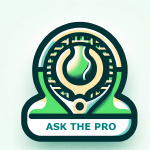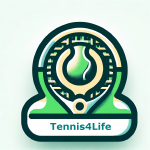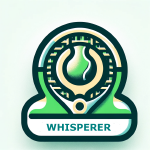Tennis Glossary: Playing Styles
/in Ask the Pro, Whisperer/by RobWe’ve added a Tennis Glossary page which includes playing styles.
Benefits of describing tennis playing styles when teaching include:
1. Personalized Coaching: Tailors instruction to match a player’s strengths and weaknesses based on their preferred style.
2. Strategy Planning: Helps in creating game plans and tactics that leverage a player’s strengths while addressing weaknesses.
3. Opponent Analysis: Enables analysis and preparation for opponents by anticipating their strategies and developing counter-strategies.
4. Versatility: Enhances adaptability to different opponents and situations, offering a competitive advantage.
5. Skill Development: Allows coaches to focus on specific skills aligned with a player’s style, like groundstroke consistency for baseline players.
6. Mental Preparation: Boosts confidence and mental toughness by aligning game plans with a player’s strengths.
The Mental Game: Nothing New!
/in Ask the Pro/by RobThis week’s question came from a Seaside competitor who had trouble coping with match pressure. I was a set up with a break in the second and I couldn’t close the match out! Why??�
Too often we focus on the ‘finish line’ and forget the journey that get’s there! Very often, we stop playing the game that got us in a winning position, try to protect the lead, and end up playing not to lose!
Sometime ago I read a book called ‘Awareness” by Anthony De Mello. Summarising from the book: .
“…. When you compete, or do anything of consequence, you will perform best by staying in the moment and enjoying the process.
This concept is age-old. Chuang Tzu, an ancient Chinese philosopher from the 4th century BC, wrote:
“When an archer is shooting for nothing, he has all his skill.
If he shoots for a brass buckle, he is already nervous.
If he shoots for a prize of gold, he goes blind or sees two targets.
He is out of his mind. His skill has not changed.
But the prize divides him. He cares. He thinks more of winning than of shooting.
And the need to win drains him of power.”
An effective approach is to just be grateful for the opportunity to play tennis, to compete, recognizing that many are unable to do so because of physical, injury, or other limitations.
Try to enjoy the game, and the benefits/results will follow.
And above all, don’t change your winning game!
Good luck,
Rob
What’s stopping us from exercising in older age?
/in Tennis4Life/by RobExercise in older age is high on the agenda, but the idea that with age comes bags of time and a desire to ‘get out there’ isn’t true for a lot of us.
How do you juggle exercise around caring for partners, grandchildren or staying in work?
What if you haven’t exercised for years? What can your body take, and how has it changed with age?
James Gallagher hears how octogenarian athlete ‘Irongran’ keeps going, he explores the mental and physical barriers that stop us exercising and he finds out what he might feel like in 40 years as he pulls on an ageing suit.
Player Profiles Available
/in Ask the Pro, Whisperer/by RobThe initial players profiles are hot linked at https://www.tenniswhisperer.com/profiles/players/
Profiles are password protected,
Angeball Tactics on the Tennis Court
/in Ask the Pro/by RobIf you’ve heard of Ange Postecoglou, you’ve almost certainly heard of Angeball. The football philosophy has come to occupy an almost sacred presence in the imaginations of the Australian’s supporters.
Angeball is not just a system, but also an ideology of sorts. One which dictates that whenever a player receives the ball, regardless of role or position on the pitch, the mindset must be proactively looking for a way to play it forward and make something happen.
Imagining an equivalent strategy in tennis to “Angeball” in soccer involves creating a mindset and tactical approach that emphasizes constant forward momentum, aggression, and making every stroke count towards gaining an advantage.
In tennis, this translates into a style of play that is not just about hitting the ball back, but about constantly looking for opportunities to take control of the point, dictate the pace of the game, and keep the opponent under pressure. Here’s how this might look:
1. Aggressive Baseline Play: Players would focus on taking the ball early, preferably on the rise, to reduce their opponent’s reaction time. This involves stepping inside the baseline whenever possible and hitting deep, penetrating groundstrokes aimed at pushing the opponent back and creating openings.
2. Proactive Court Positioning: Instead of reacting to the opponent’s shots, players would actively look to position themselves in a way that allows them to attack. This means moving quickly to the net when the opportunity arises, cutting off angles, and using split-step movements to be ready for aggressive volleys.
3. Serve and Return Strategy: The serve would be used as a weapon to immediately take control of the point, aiming for aces or unreturnable serves. On the return, players would aim to be assertive, trying to neutralize powerful serves and immediately transitioning to an offensive position.
4. Variety with Purpose: While maintaining aggression, players would incorporate a variety of shots (like topspin, slice, drop shots, lobs) but always with the intent of moving the point forward towards winning the rally, not just for the sake of mixing it up.
5. Physical and Mental Conditioning: This style of play requires exceptional physical fitness to sustain high-intensity, aggressive play throughout a match. Mentally, players must be conditioned to remain focused, resilient, and constantly looking for opportunities to seize control.
6. Strategic Risk Management: While aggression is key, players would need to balance this with smart decision-making. This means knowing when to unleash a powerful shot versus when to play a safer one, understanding the opponent’s weaknesses, and exploiting them without overplaying their hand.
7. Continuous Pressure: The ideology would be about never letting up, continuously applying pressure in every point, every game, every set. This relentless approach is designed to mentally and physically wear down opponents.
8. Adaptability and In-Game Adjustments: Despite the emphasis on forward play, players would be trained to quickly adapt their strategy based on the match’s flow and the opponent’s responses, always seeking the most effective way to maintain the initiative.
This tennis strategy, akin to Angeball in soccer, creates a dynamic, assertive, and mentally tough player, always looking to be the one dictating play and forcing opponents into uncomfortable, defensive positions.
How Can I Improve My Doubles Play for Badge?
/in Ask the Pro/by RobThis week’s question comes from a mid level club member. “With 2024 Badge about to start, what are some simple strategies I can use to improve my doubles play?”
Overall, the key to successful doubles play is to communicate with your partner, play to your strengths, and be aggressive when the opportunity arises.
Drilling down, here are a few strategies to consider to help you improve your tennis doubles play:
-
Communicate with your partner: Good communication is essential in doubles. Make sure to talk to your partner before, during, and after the match. Discuss tactics, shots, and weaknesses that you can exploit.
-
Play to your strengths: In doubles, it is essential to play to your strengths. If you are good at the net, try to play aggressively and move up to the net as much as possible. If you have a strong backhand, use it to keep the ball deep, and either setup your partner and force errors.
-
Use the lob: The lob is a great shot in doubles, especially if your opponents are playing close to the net. It can be used to push them back and create space for you to hit a winner.
-
Stay in position: Make sure you and your partner are covering the court properly: particularly the middle of the court which covers 80% of doubles play. Stay in your assigned positions and be ready to move quickly to cover any open spaces. It’s a trap to try to “guard your side line” — which takes you out of the main game!
-
Watch your opponent’s body language: Pay attention to your opponent’s body language. If they are shifting their weight or preparing to hit a certain shot, you may be able to anticipate their next move and adjust your position accordingly.
-
Serve and volley: Serving and volleying can be an effective strategy in doubles. It puts pressure on your opponents and can help you win points quickly. And it’s a good surprize tactic if you normally stay on the base line when serving.
-
Take risks: Don’t be afraid to take risks and go for winners when appropriate. In doubles, the court is smaller, and there is less time to react, so aggressive play can be rewarded. Even so, your primary objective must always be to get into the point!
Good luck in Badge,
Rob Tennis Whisperer
New Whisperer Website
/in Whisperer/by Rob
Recent News
- Tiebreaks & Swiatek May 6, 2024
- Manly Ladies Team 5 Excels in Debut Badge Match April 28, 2024
- Bede Shines at 2024 JT Premier 250 NSW Age April 24, 2024
- The Importance of Sticking to Your Tools During Match Play April 21, 2024
- Crucial Point & Games April 17, 2024




